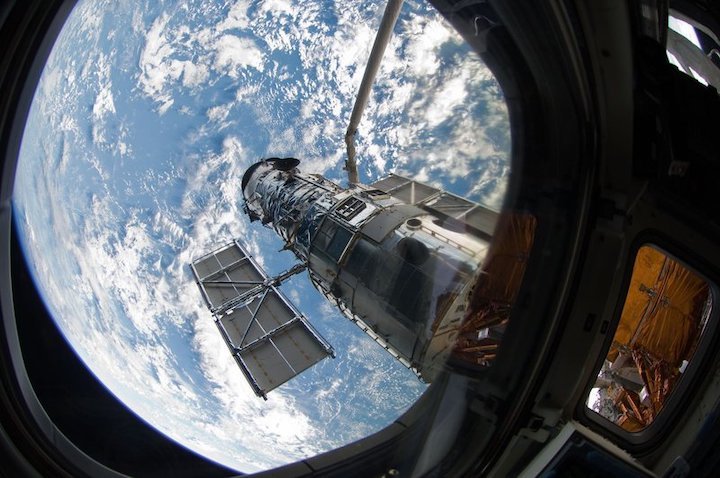He immediately thought to himself, "What did I screw up this time?" which is, as he puts it, "Pretty much what you always do as a scientist, when you see something that didn't work."
He checked and rechecked the instructions he sent to Hubble. They were fine.
Nonetheless, it turns out that Hubble had been pointing at the wrong patch of sky. Brown says this kind of error quickly happened two more times as he tried to survey Jupiter's moons.
"I don't know if three times in a week is unusual or not, but it seems pretty unusual to me," Brown says.
Tom Brown, head of the Hubble mission office at the Space Telescope Science Institute in Baltimore — and no relation to Mike Brown — says that Hubble does indeed just sometimes aim in the wrong direction.
"It used to happen on the order of about 1% of the time," he says. "These days, it happens more like 5% of the time."
This is an aging telescope after all. Back in 2018, when a gyroscope on Hubble failed, researchers activated one of its on-board spares — the so-called gyroscope 3. It's been glitchy from the get-go.
"It tells you the telescope is moving around even when it's not," Brown says.
Telescope operators compensate for this error, but sometimes it gets out of whack before they're able to adjust things.
Disappointed researchers can submit a request to have a do-over, and they'll generally get their data eventually — assuming they weren't trying to see some once-in-a-million years brief cosmic event.
No one really knows why gyroscope 3 is such a pain, Brown says, and conceivably, it could get so bad that they might have to turn that one off.
"The biggest downside then is, instead of having the entire sky available at any one time, we would have half the sky available at any one time," he says.
Still, Hubble remains enormously popular. Hundreds of teams get to use the telescope every year. They are the lucky ones, because there is so much demand that the majority of proposed observations have to be rejected.
Hubble is being used for fields that didn't even exist when it was launched, such as studying planets that orbit distant stars.
An image captured by the Hubble Space Telescope as three of Jupiter's largest moons parade in front of the gas giant on Feb. 5, 2015. On the left is the moon Callisto and on the right, Io. The shadows from Europa, which cannot be seen in the image, Callisto and Io are strung out from left to right.
NASA, ESA, Hubble Heritage Team
"Hubble really is a very unique resource for humanity. And once it's gone — I mean, a lot of people are already dreading that day — but I think when it's gone, it's going to hit people ... hard," Brown says.
Engineers estimate that Hubble could keep going for at least another five years and probably longer.
NASA has another big space telescope called the James Webb in the works, but it's not exactly like Hubble has experienced multiple delays and huge cost overruns. It won't launch before late next year.
Quelle: npr

